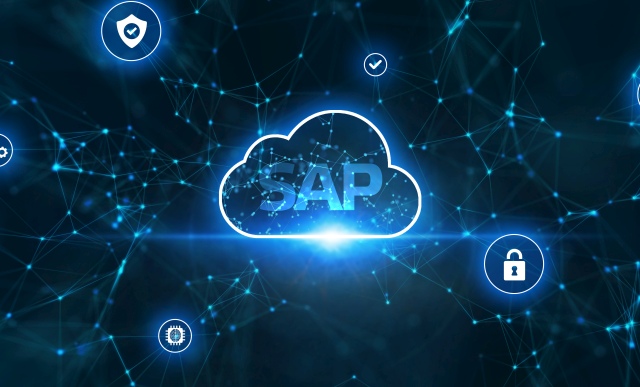There has been significant discussion surrounding SAP’s stance on cloud versus on-premise. The
recent statement by DSAG board member Sebastian Westphal implies that SAP is focusing enhancements on the public cloud version of SAP S/4HANA in a push to accelerate cloud adoption. But beyond these statements, there also seems to be a growing concern among SAP customers about SAP increasingly de-emphasizing its on-premise software solutions despite thousands of enterprise customers still using them.
A Complex SAP S/4HANA Landscape
Part of the concern stems from the different deployment options for SAP S/4HANA. Although
this recently updated blog post lists and clearly differentiates between the four different options for SAP S/4HANA deployment, these options may not be clearly understood by the broader SAP community.
When SAP S/4HANA was launched in 2015, the only version available was an on-premise release of SAP S/4HANA Finance which was sold, as was the case with SAP ECC and SAP Business Suite, with a perpetual license. When SAP S/4HANA Cloud was released later the same year, it was a software-as-a-service public cloud offering. SAP S/4HANA Cloud used subscription licensing but did not initially offer the same features as the traditional on-premise license.
Product name changes have clearly added to this confusion. For example, the name SAP S/4HANA Cloud, private edition was used by SAP until 2018 when SAP S/4HANA Cloud, single tenant edition, replaced it. However, in 2021, the name was repurposed to refer to SAP’s private cloud offering launched as part of RISE with SAP. But confusion also exists regarding changes and updates to names such as SAP S/4HANA Cloud, essentials edition; SAP S/4HANA Cloud, extended edition; and SAP S/4HANA Cloud, public edition.
Organizations may also discover that a product or service they received pricing information for a year ago has undergone a name change or is now included in a different bundle. Even when there is a clear understanding of the differences between SAP S/4HANA options, SAP’s strategic focus on cloud ERP has further complicated the picture for organizations that are just looking to move to SAP S/4HANA as quickly as possible while minimizing disruption.
The On-Premise Question
One of the remarks that Westphal made in the press release was that he felt “all new enhancements and processes will be launched in the public cloud edition.” However, according to
SAPinsider research, as more than three-quarters of those planning a RISE with SAP S/4HANA Cloud deployment intend to use SAP S/4HANA Cloud, private edition, it does not make sense for SAP to only enhance SAP S/4HANA Cloud, public edition. But since SAP frequently only says SAP S/4HANA Cloud, there is often additional confusion among customers about whether that means SAP S/4HANA Cloud, public edition, or SAP S/4HANA Cloud, private edition.
Moreover, underlying Westphal’s statement is a concern that SAP is moving away from its traditional on-premise audience. Many of the over 30,000 organizations still running SAP ECC or SAP Business Suite may share this sentiment. Since the cloud is a strategic pillar for SAP and is frequently the focus of discussions or presentations, it is easy to understand why customers may feel this way.
These concerns may be reinforced by remarks from SAP’s Head of Customer Success Scott Russell during the
Q1 2023 earnings call. Russell asserted “customers have made the decision to move to the cloud, but the journey will differ.” This statement supports SAP’s narrative that RISE with SAP is designed to facilitate a transformation journey that fits each organization’s landscape, rather than simply being a target architecture in the cloud.
While many organizations are likely still focused on their existing on-premise deployments, there is data to support Russell’s assertion. SAP’s platform-as-a-service (PaaS) revenue increased by 45% during the quarter, more than twice the rate of software-as-a-service revenue. SAP’s primary PaaS offering is SAP HEC and sources suggest that many of the customers licensing SAP HEC are doing so in conjunction with a switch to subscription-based SAP ECC licensing, which offers them significant cost savings. This switch won’t show up as a move to SAP S/4HANA, but it does help SAP drive additional cloud revenue and has more organizations adopting the cloud.
However, SAP continues to introduce most new features into cloud-based solutions, and customers are encouraged to consider cloud or subscription-based offerings. But that does not mean that on-premise versions are not available for offerings like SAP S/4HANA. What is certain is that customers will need to be clear about what they want to deploy and be prepared to negotiate to reach those goals.
What Does This Mean for SAPinsiders?
SAP’s focus on the cloud is not going to change. Cloud has been the strategic objective since Bill McDermott was the CEO, and increasing cloud revenue is what investors and analysts expect in quarterly earnings. Any organization working with SAP must understand this will impact every interaction.
SAP’s cloud ERP agenda will also continue to be realized through GROW with SAP and RISE with SAP. These are crucial for increasing cloud revenue, as they ensure that cloud agreements are through SAP and not directly with a cloud provider.
Organizations must determine how to leverage their importance to SAP. This will always be easier for larger organizations that have had a standing relationship, but every customer is important. Understanding how to make that work will be a crucial part of future negotiations and interactions.
Organizations must also learn from the successes and experiences of their peers. Go to events and talk to other customers. Use that knowledge to build the capabilities to be as prepared as possible.









